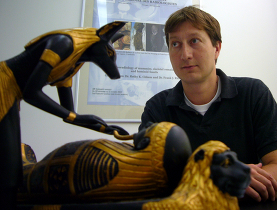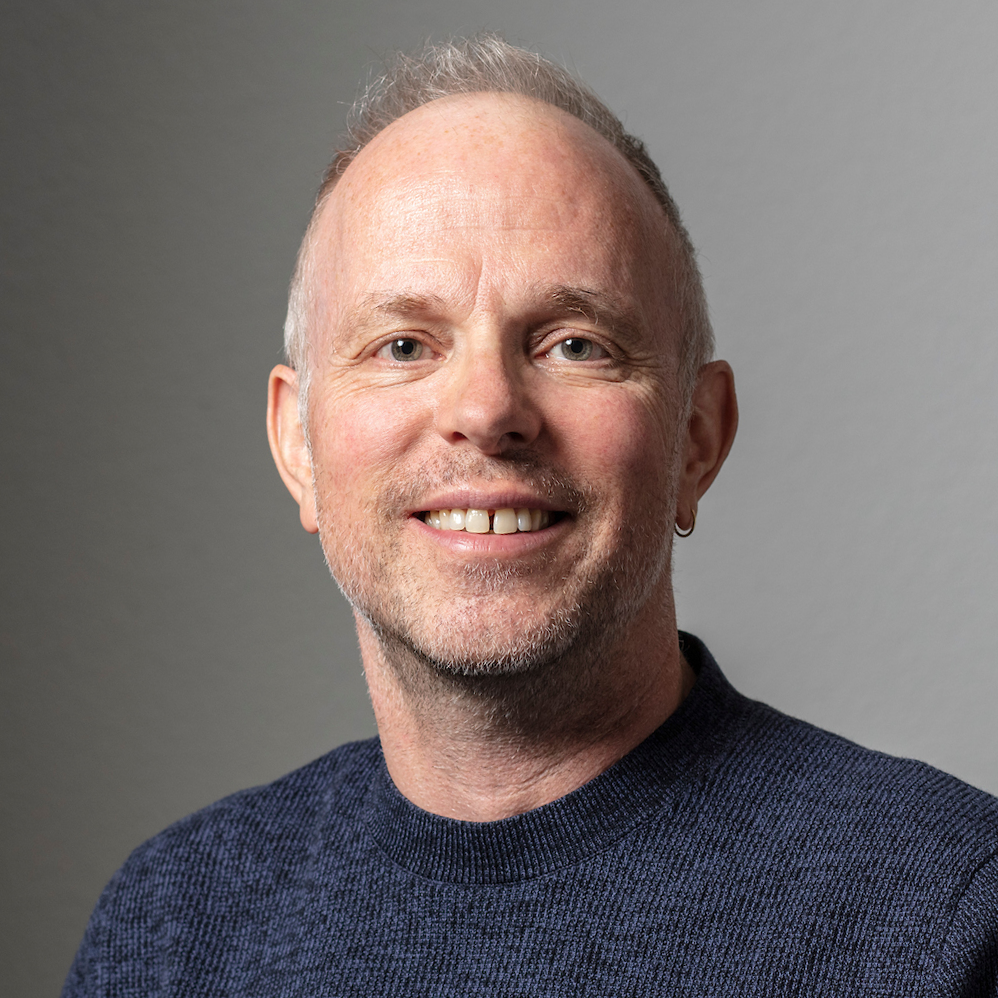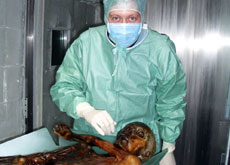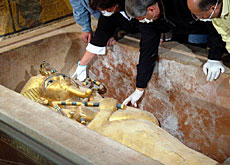Researcher is no mummy’s boy

Swiss doctor Frank Rühli is just 36 years old, yet he is already recognised as one of the world's foremost mummy researchers.
The thrill of making new discoveries has led him to examine two of the most famous mummies in recent memory: Egyptian pharaoh Tutankhamun and Ötzi the iceman.
Rühli’s office at Zurich University is neat and tidy, with just one group of sculptures giving away a hint of his passion. It’s only when he begins to talk that you realise how passionate he really is about his work.
“I couldn’t work in a field where emotion didn’t play a role or focus on pure science,” he admits. “Combining research with an emotional, unscientific fascination is what makes me tick.”
People have always been fascinated by mummies: the pharaoh’s curse, the mystery of the pyramids have contributed to the attraction. The success of recent exhibitions has shown that mummification is anything but a “dead” issue.
“There is an emotional aspect: you are confronted by your own mortality,” explains Rühli. Looking at someone who died thousands of years ago is something “fascinating in itself”.
Still, the anatomy specialist is mainly interested in the science.
“We can learn a lot about the development and evolution of diseases,” he told swissinfo. “It is also becoming more medical in terms of research, looking at for example how mummification affects body tissue.”
Tutankhamun
Rühli was hooked on mummies at an early age. “Even as a child, I was interested in ancient Egypt, but I don’t really know why,” he says. After a few trips to Egypt, there was no turning back.
He studied medicine but retained an interest in ancient Egypt. He did his doctor’s thesis on an Egyptian mummy, combining his personal interests with medicine.
Today he is considered one of the foremost specialists in his field. To uncover the secrets of the mummies, he relies on the most modern techniques available. Along with other researchers he was able to examine perhaps the most famous mummy of them all – Tutankhamun.
The body of the pharaoh, who died at age 19, underwent a computed tomography (CT) scan, a staple among radiology techniques. This method allowed the researchers to see through the bandages surrounding the mummy.
“It was somehow moving to see the inside of the body of someone so famous and about whom you had read in schoolbooks,” says Rühli.
He was able to prove that Tutankhamun did not die from a blow to the head as some had hypothesised. While the cause of death remains unclear, the researchers were also able to show that the king was generally healthy and rule out most diseases.
Technical advances
Rühli also examined Ötzi, the mummy of a man dating back to 3,500 years BC and found in 1991 in the Alps near the border between Austria and Italy. The researchers showed that the iceman had died most likely of blood loss from an arrow wound in his left shoulder.
CT scanning does away with the need to open up the corpse to examine it. However it does have the disadvantage of not being able to distinguish between certain types of body tissue and its beams can damage genetic material.
To overcome this problem, Rühli has developed a new method using magnetic resonance imaging. He says that by tweaking existing technology, he now has access to better pictures, bringing him closer to his personal goal.
“I feel the need to establish mummy research as an independent field of research,” he told swissinfo. “I think we have achieved that here in Zurich, becoming a sort of university competence centre over the past few years.”
The medicine faculty has already recognised that mummy research is one method of discovering more about the history of diseases. For Rühli though, it is important that in future more people pursue a career in this field, at the highest possible technical level.
Little is known today about how diseases spread, how they were transmitted and how they were treated.
“We are still at the beginning,” admits Rühli. “We don’t know how the Egyptians handled disease. And that is just a small piece of a huge puzzle.”
swissinfo, Christian Raaflaub in Zurich
The aim of this project, co-chaired by Rühli, is the minimal and non-invasive examination of human mummies mostly from Swiss collections.
The methods used include X-rays, endoscopy, CT scans, MRI, light and electron microscopy as well as “meta-analysis” of literature on mummies.
Besides individual anatomical variants and pathologies, changes before and after death – for example the impact of artificial mummification on a corpse’s appearance – are investigated.
A mummy is a corpse whose skin and dried flesh have been preserved by exposure to chemicals, extreme cold, very low humidity, or by lack of air when submerged.
The best-known mummies are those that were embalmed for preservation, particularly those in ancient Egypt. This concerned not just humans but also crocodiles and cats.
In China, preserved corpses have been recovered from wooden coffins found underwater and packed with medicinal herbs.
Although Egyptian mummies are the most famous, the oldest found are the Chinchorro mummies (up to 7,000 years old) from northern Chile and southern Peru.

In compliance with the JTI standards
More: SWI swissinfo.ch certified by the Journalism Trust Initiative



You can find an overview of ongoing debates with our journalists here. Please join us!
If you want to start a conversation about a topic raised in this article or want to report factual errors, email us at english@swissinfo.ch.